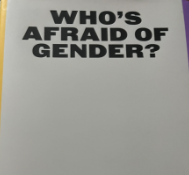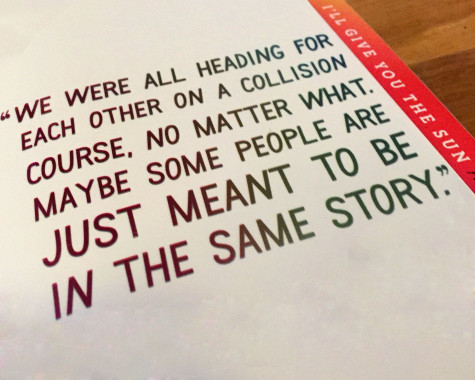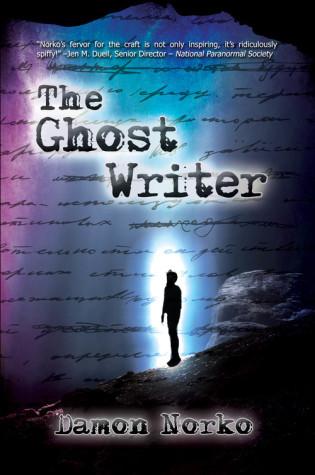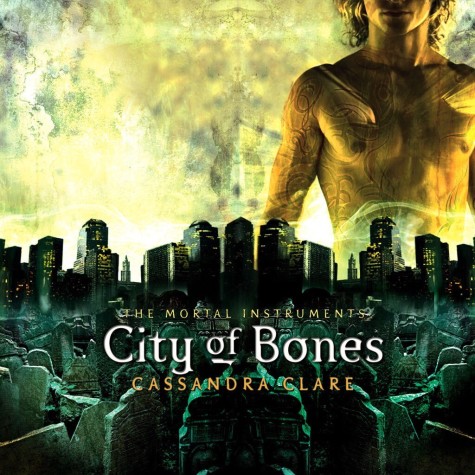Bloodsworth: Maryland’s One Book is a tragic, yet inspiring story
“Heartbreaking, thought-provoking, and well-written.”
These are the words forensics science teacher Ms. Jessica Baker, used to describe the events of Bloodsworth: The True Story of the First Death Row Inmate Exonerated by DNA Evidence by Tim Junkin.
Every year, the One Maryland One Book program chooses a book according to a theme and encourages communities all over Maryland to read the selected piece together, creating a shared experience for interested readers. This year, One Maryland One Book’s theme is justice.
The LHS forensic class read this book and later had a large group discussion. Dr. Theresa R. Alban, the Superintendent of Frederick County Public Schools, and Colleen Beall, FCPS Science Supervisor, also read the book and joined the class for the discussion.
Before the book talk, students were given copies of the book and reading guide questions. Throughout the two weeks, Baker asked the student about their opinions on the different events that occurred throughout the book. The books are distributed free to requesting schools through Program Director Andrea Lewis and Maryland Humanities Council.
The story of one man’s incarceration due to poor police work is captivating and thought-provoking, and, unfortunately, entirely true.
The story begins in 1984, in the woods by Fontana Village (a community in Rosedale, Maryland). Dawn Hamilton, a 9 year-old girl, was found dead with evidence of a violent murder and rape.
The author, Tim Junkin, describes the details of the murder. Before the murder, Dawn had been looking for her friend, Lisa. She came across two boy familiar to her. These boys were Christian Shipley and Jackie Poling. Dawn wanted the boys to help her look, but they were too busy fishing in the pond.
Then, a man came up to Dawn, claiming he was playing hide and seek with Lisa. He invited Dawn to help him look for her friend. Dawn agreed.
Within hours, the family raised an alarm. Dawn was missing.
The police and detectives started looking for the criminal. The book reveals that the crime could have been solved quickly, but they did not pursue many of the alarming leads and different pieces of evidence. This set the start of what was, for Kirk Bloodsworth, a 9-year disaster.
In the beginning of the case, Detectives Ramsey and Capel, the men who who were put in charge of the case, asked the 10 year-old Shipley to help them put together a composite sketch using different options for facial features, which would help them find potential suspects. This composite sketch, which was later revealed to be very flawed, was just one of the missteps in the case.
Instances like this led Kirk Bloodsworth, who was in Baltimore (close to Rosedale) on the day of the murder, to be convicted of the crime. The Institute for Psychological Therapies forensics page has a good summary of all the mistakes the police made.
Kirk Bloodsworth had no connection to this crime whatsoever. He was only accused because of misunderstood circumstantial evidence and a misleading tip.
In 1985, Kirk Bloodsworth was put on death row for a crime he did not commit.
During the almost nine years he was in prison, Bloodsworth relentlessly wrote letters to government officials and everybody he could, pleading that he was innocent.
The reader gets as frustrated as Bloodsworth and we cannot help but think, “Why won’t anybody see the truth?”
This did not stop Bloodsworth, though. Miraculously, Bloodsworth–and the newly invented DNA analysis process–would be the reason for his eventual release.
“It doesn’t do any good to sit there and do nothing. You need to keep standing up for yourself and never ever stop,” Bloodsworth said. “Always keep telling people you’re innocent and keep pushing for somebody to prove it…Just hang in there and you can only do it a day at a time; don’t worry about tomorrow. Just tell them you’re innocent today.”
Even through the frustration of knowing how poorly Bloodsworth was treated, his determination is inspiring, Junkin shows the reader just how insistent Bloodsworth was during his time in jail.
In the early 1990’s, Bloodsworth read about the new science of DNA, but there was little evidence from the crime nine years earlier. The story traces the agonizing process of retreiving the DNA, testing, and re-testing for accuracy.
In 1993, after almost 9 years on death row, Kirk Bloodsworth was a free man. He had become the first and only person in Maryland to be exonerated from death row.
This has to be the most impactful moment in the story. Junkin hypes up the day of Bloodsworth’s release. All of Baltimore celebrated. The reader can’t help but feel a huge sense of relief and happiness.
In fact, just about every moment in this book is filled with emotion.
Bloodsworth goes into incredible detail about the disturbing crime, Kirk Bloodsworth’s background, the frustrating court trials, and the disgusting truths of life in jail when you are labeled as a child rapist.
The book describes each event so clearly, and the reader learns the history of the penal system in Maryland, from it’s foundation to 1984.
As a Maryland resident, I definitely enjoyed this chapter. It provides a background for the state I grew up in that I did not know before.
“Being born and raised in Maryland, visiting some of the places in the book made me think about other crimes that could have been committed in other locations I’ve visited and never even known about,” said Baker.
A disturbing feeling becomes universal to all readers once the crime occurs.
The discomfort of the crime will make the reader shiver, yet the book remains intriguing. After feeling so bad for Kirk and the victim, readers want them to have the proper justice they deserve. This leads to a greater understanding of the difficulties of a death sentence. The story is not sympathetic toward the criminal justice system.
“…The reader feels sadness for the little girl who was murdered [and the] outrage that the justice system we trust let someone down so badly,” said Baker.
What we can do, is prevent wrongful convictions from happening again.
The Innocence Project, which was actually started a year before the release of Bloodsworth, advocates for the use of DNA testing in criminal cases.
Baker has another suggestion. “I think a lot of standardized training needs to be done with law enforcement officers. I think that judges should read about new scientific techniques that they can make educated decisions about evidence. I think that jurors should be picked very carefully and without bias.”
In the study guides and class discussions, the main idea revolved around the death penalty controversy. The class seemed biased for it at the beginning of the book, but split by the end. Some students were emotional.
“[Before reading the book,] I had a thought that the death penalty was a necessary evil that dealt with dangerous people,” said Thomas French, Class of 2020 member. While he still believes that capital punishment is necessary, his views have changed.
“I think there should be more control [on capital punishment],” he said.
Michael Strathman, a former forensics student, had not read this book, but shared his thoughts on the controversial topic. Hearing about this case gave him a greater reason to be against it. “The chance that an innocent person can be convicted of a crime, even with today’s technology,” he said, “Is too much to allow the government to execute criminals.”
Even after finding the real killer, Kimberly Shay Ruffner, who was also in the Maryland Penitentiary at the same time as Bloodsworth, Kirk Bloodsworth advocated and still continues to advocate against capital punishment. In fact, he works with the Witness to Innocence organization and a supporter of the Innocence Protection Act, or the IPA.
On May 2, 2013, the death penalty was abolished in Maryland. Therefore, Kirk Bloodsworth will always remain as the only person in the state of Maryland to be exonerated from death row from DNA evidence.
Today, Bloodsworth has been a free man for 25 years. He continues to share his story and speak out against capital punishment.
Hopefully, this book will spread to people all across the United States and start new conversations about the country we live it and the system above it.
If you are into true crime, want to know more about the justice system, or just indulge deep into a mind-boggling case, you need to read this book. This case is certainly unforgettable and even more unforgettable for Kirk Bloodsworth.
Maryland Humanities has a schedule of book talks about Bloodsworth around all of Maryland.
Your donation will support the student journalists of Linganore High School. Your contribution will allow us to purchase camera/recording equipment and software. We hope to raise enough money to re-start a monthly printed issue of our paper.

















